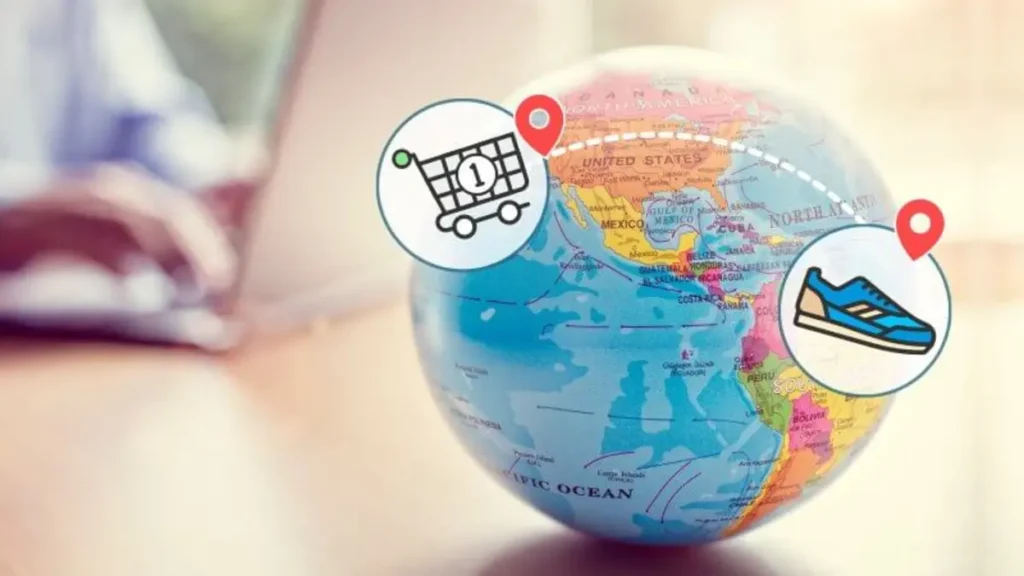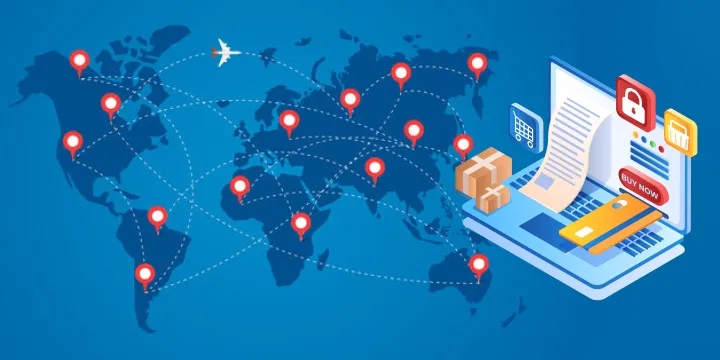- nstacksoftech
- Business, Cloud ERP, CRM, ERP
- 1783 Views
Unlock global success with cross-border eCommerce! Our guide reveals winning strategies for navigating international trade, seizing lucrative opportunities, and staying ahead in the global marketplace. Join the revolution and propel your business to new heights with cross-border eCommerce.
In the midst of a rapidly globalizing world, a transformative trend has emerged, reshaping the dynamics of business and consumer interactions across borders. This era heralds the rise of cross-border eCommerce, characterized by its multiregional, multilingual, multicurrency nature, presenting unprecedented opportunities for businesses and consumers alike.
In this comprehensive exploration, we delve into the realm of cross-border eCommerce, unraveling its significance for businesses, and uncovering its remarkable growth trajectory and cutting-edge trends. Whether you’re contemplating expanding your eCommerce venture overseas or venturing into new markets like China or the UAE, this article serves as your guide to navigating the complexities of cross-border trade.
Contents
- Understanding Cross-Border eCommerce
- The Future, Growth, and Trends of Cross-Border eCommerce
- Navigating Cross-Border eCommerce Platform Locations
- Mechanics of Cross-Border eCommerce
- Cross-Border eCommerce vs. Traditional International Trade
- Significance of B2B Cross-Border eCommerce
- Initiating a Cross-Border eCommerce Venture
- Insights into Cross-Border eCommerce in China
- Exploring Cross-Border eCommerce in the UAE
- Importance of Multilingual, Multistore, and Multivendor Solutions
- Conclusion: Embracing the Cross-Border eCommerce Revolution

Understanding Cross-Border eCommerce
Cross-border eCommerce transcends geographical boundaries, facilitating online transactions between businesses and consumers located in different countries. It encompasses the entire spectrum of eCommerce activities, including online purchases, digital payments, and other functionalities inherent to digital platforms and websites. For instance, global companies sourcing products from Alibaba exemplify the cross-border eCommerce paradigm.
The Future, Growth, and Trends of Cross-Border eCommerce
The cross-border eCommerce market is poised for exponential growth, projected to double its value by 2028, reaching $3.4 trillion. This growth is fueled by the proliferation of marketplace platforms and the increasing dominance of players like Alibaba, Amazon, and eBay, catering to global consumer demands. Moreover, the rapid expansion of the Chinese eCommerce market, surpassing both European and American markets, underscores its transformative impact on cross-border trade.
Navigating Cross-Border eCommerce Platform Locations

The physical location of cross-border eCommerce platforms is inconsequential compared to their operational capabilities. What matters most is the platform’s ability to handle customer and company data securely, necessitating cloud-native solutions adaptable to diverse regulatory environments.
Mechanics of Cross-Border eCommerce
Cross-border eCommerce encompasses various operational models, including standard marketplace, affiliated businesses, redistribution, and aggregators, each tailored to cater to the unique needs of international trade. Key players in this ecosystem include marketplaces, payment processors, logistics providers, and eCommerce software vendors.
Cross-Border eCommerce vs. Traditional International Trade
Unlike traditional international trade, which involves physical transactions and market entry through physical establishments, cross-border eCommerce primarily transpires online, aiming to expand market reach without the need for physical presence across borders.
Significance of B2B Cross-Border eCommerce
B2B cross-border eCommerce facilitates seamless transactions between businesses across borders, leveraging digital platforms to streamline international trade processes and expand market outreach.
Initiating a Cross-Border eCommerce Venture
Embarking on a cross-border eCommerce venture entails meticulous market research, product selection, business planning, and platform adoption. Leveraging a cloud-native modular eCommerce platform like Virto Commerce enables scalability and customization to accommodate evolving business needs.
Insights into Cross-Border eCommerce in China
China’s burgeoning cross-border eCommerce market presents lucrative opportunities for international businesses, with platforms like Tmall Global and JD Worldwide driving exponential growth. Partnering with Chinese companies and leveraging adaptable eCommerce platforms are essential for success in this market.
Exploring Cross-Border eCommerce in the UAE
The UAE emerges as a burgeoning hub for cross-border eCommerce, propelled by high digital adoption rates and a growing appetite for online B2B transactions. With tailored eCommerce solutions and localized strategies, businesses can capitalize on the burgeoning opportunities in the UAE market.
Importance of Multilingual, Multistore, and Multivendor Solutions
Multilingual, multistore, and multivendor solutions are indispensable for navigating the complexities of cross-border eCommerce, enabling businesses to cater to diverse markets with localized content, currencies, and interfaces. Platforms like Virto Commerce offer robust features to facilitate seamless international expansion.
Conclusion: Embracing the Cross-Border eCommerce Revolution
As cross-border eCommerce continues to evolve, early adopters stand to gain a competitive edge in the global marketplace. By leveraging tailored strategies, robust eCommerce platforms, and a deep understanding of target markets, businesses can capitalize on the boundless opportunities presented by cross-border trade. Embrace the cross-border eCommerce revolution and embark on a journey towards global success.
In conclusion, the cross-border eCommerce landscape presents unparalleled opportunities for businesses willing to navigate its complexities and embrace its transformative potential. By staying abreast of emerging trends, leveraging innovative technologies, and adopting a strategic approach, businesses can unlock new avenues for growth and establish a formidable presence in the global marketplace.



